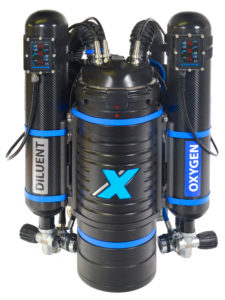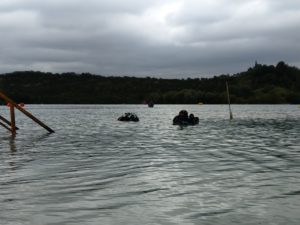Below I will try in the simplest terms to discuss several issues related to the part of physics, which have or may have a big impact on diving.
Contents
Pressure
The pressure is the force acting on the area. The SI unit of pressure is the pascal (force 1 N on 1 m²). In practice, different units are used: bars (1000 hPa) or atmosphere. The technical atmosphere is not equal to the physical atmosphere. 1atm (physical) is 1.033at (technical).
In practice, the most common is a value of absolute pressure which is measured relative to vacuum. In other words, we are talking about pressure, which is the sum of atmospheric and hydrostatic pressures. For simplicity the value of the atmospheric pressure as 1at. The formula for absolute pressure is:
P = D/10 + 1
gdzie: P – pressure, D – depth (in meters).
Aside from the differences in the densities of saltwater and normal (lake) water, the formula we can calculate the pressure that prevails on any depth. For example, the pressure at 28 meters is 28/10 + 1 = 3.8at.
Dalton’s Law
As air is a mixture of gases, so to dive safely we need to know what is a partial pressure law. It states that the total pressure of the gas mixture is equal to the sum of pressures of all mixture components, which is the sum of the partial pressures of all components. Each mixture component has a partial pressure which can be calculated by multiplying the total pressure of the gas mixture by the percentage of the component. If we have a gas which is 80% nitrogen and 20% oxygen, and the whole is pressurized to 5at partial pressure are:
PPn = 5*0,8 = 4at
PPo = 5*0,2 = 1at
where: PPn – partial pressure of nitrogen, PPo – partial pressure of oxygen.
This law is called Dalton’s Law.
Henry’s Law
Briefly speaking, the law describes the dependence of the amount of gas that can be dissolved in the liquid, considering the pressure at which the gas is located. Put simply: the higher the gas pressure, the more it dissolves in a liquid. To put it simply less: The concentration of dissolved gas which is in equilibrium with the gas phase is proportional to the pressure exerted by the gas. I prefer the first description.
C = k*P
where: C – concentration of dissolved gas k – the factor of solubility, P – pressure
This law is of great importance for divers because it shows how it will behave dissolved in the blood gas, depending on the varying depth. If the diver emerges from a certain depth, the pressure around drops, as a consequence of gas (nitrogen) dissolved in the blood begins to be in a state of supersaturation and starts being isolated from it in the form of bubbles. It is of great importance from the point of view of the theory of decompression, which will be discussed later.
Guy–Lussac Law
Guy-Lussac law implies that, at constant gas volume, the ratio of gas pressure to its temperature is also constant. Mathematically we may say that:
P/t = const.
In other words, at a constant volume of gas, its pressure is proportional to the temperature. Double the temperature of the gas and the pressure increase also twice. If we want to save the overall relationship between the two states of gas 1 and 2 in the same volume we can write that:
P1/t1 = P2/t2
Let’s take an example of a balloon filled with a gas at a temperature of 10 deg. C and at a pressure of 1 atm. After heating it to 20 deg. C the pressure will be:
P2=(t2/t1)*P1 so in real values [(20+273)/(10+273)]*1 = 1.03 ata
As you probably noticed, the temperature must be expressed in Kelvin. This law is related to the transformation of the gas, which is called isochoric transformation that is a process at a constant volume.
Charles Law
This law is a slight transformation of the previous one. This law states that at constant gas pressure, the volume is proportional to the temperature. So if we double the temperature of gas its volume will increase also twice.
V/t = const.
Mathematically expressed the relationship between the two states the gas looks like:
V1/t1 = V2/t2
Fick’s Law
This law defines the behavior of gas molecules and their spontaneous spread. Diffusion is a process leading to a leveling of concentrations but it continues after equalization. After mixing of the components of the mixture diffusion continues, although it will not lead to the concentration changes. Different gases have different diffusion rates. This law applies, for example, during the gas exchange in the alveoli when immersion or ascent (decompression) takes place.
Joule – Thomson effect





